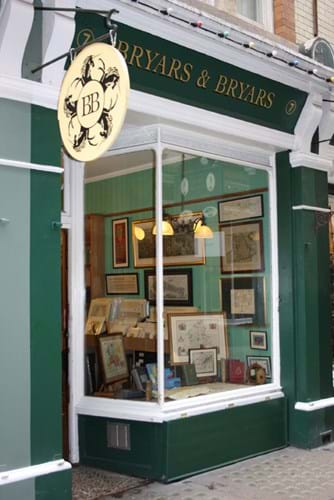
Art and antiques dealers in the south of England, where property prices have continued to rise, will be among the hardest hit.
Matthew Hall, director at Panter & Hall, says his business faces a 33% rise in rates at its Pall Mall gallery and a 22% increase at its Cecil Court premises. The total bill will rise to £90,000.
He said: “I can’t believe a Tory government is doing this. It is an anti-capitalist policy to raise rates so high as it really hits small businesses.
“We are a mid-range gallery selling paintings at under £20,000. We have to sell an awful lot of paintings to cover our costs.”
According to the Federation of Small Businesses, the “average rateable value” of a property in London exceeds the next closest region (the south-east) by around £23,000. Only businesses with a rateable value of £12,000 or less are able to apply for relief.
‘Fair and proportionate'
Tim Bryars, an antiquarian book and map dealer in Cecil Court, central London, said: “We are not screaming for special favours. We are not grumbling about paying tax. But the tax should be fair and proportionate. If businesses were taxed on profit, rather than shop space, it would give us freedom to invest.”
He added: “I am paying more than £300 a year for every metre of shelving I own. It now costs me money to have a £10 book on the shelf.”
Bryars said he could be forced to focus away from lower-priced stock.

Tim Bryars runs antiquarian book and map dealer Bryars & Bryars in Cecil Court, central London, and has spoken out on the crippling business rates rise that is due in April.
Mark Field, MP for Cities of London & Westminster, said: “The shopkeepers on Cecil
Court are essentially excluded from the Chancellor’s assistance package as they occupy premises with rateable values over £12,000.
“One bookseller on the ancient alley told me that his rateable value is £21,250. We need rate relief for London’s independent businesses.”
The impact is not just in London. Mike Golding of Cotswolds’ Huntington Antiques in Stow-on-the-Wold, said at the previous review, business rates increased in the area by more than 80% and he is “waiting with trepidation” for news of the latest rethink.
He said: “Business rate rises have had a detrimental effect
on antiques shops in the Cotswolds. The number of major dealers in this town has halved since 2008.”
How business rates are calculated
- Business rates are based on the value of the property that a business occupies.
- Rates are usually the third largest outgoing for small businesses after rent and staff costs.
- Commercial property is revalued every five years. However, following the recession, the government delayed the last revaluation by two years.
- The latest revaluation is based on rentable values on April 1, 2015 and comes into effect on April 1, 2017.
- The tax brings in around £27.8bn a year for the Treasury, making it the sixth biggest source
Business Rates: the reaction:
“The government is in danger of driving out independent businesses that give such colour to our high streets, only to be replaced by cookie cutter brands. We are at risk of losing these hubs of diversity.”
Marco Forgione, BADA chief executive
“Rateable values have been rising higher than property values and for many small businesses, rates can be crippling.”
Rebecca Davies, LAPADA chief executive
“The new thresholds should encourage small businesses to remain in their location of choice and not be forced out because they cannot afford the cost of premises.”
Sue Terpilowski, The Federation of Small Businesses London policy chair





